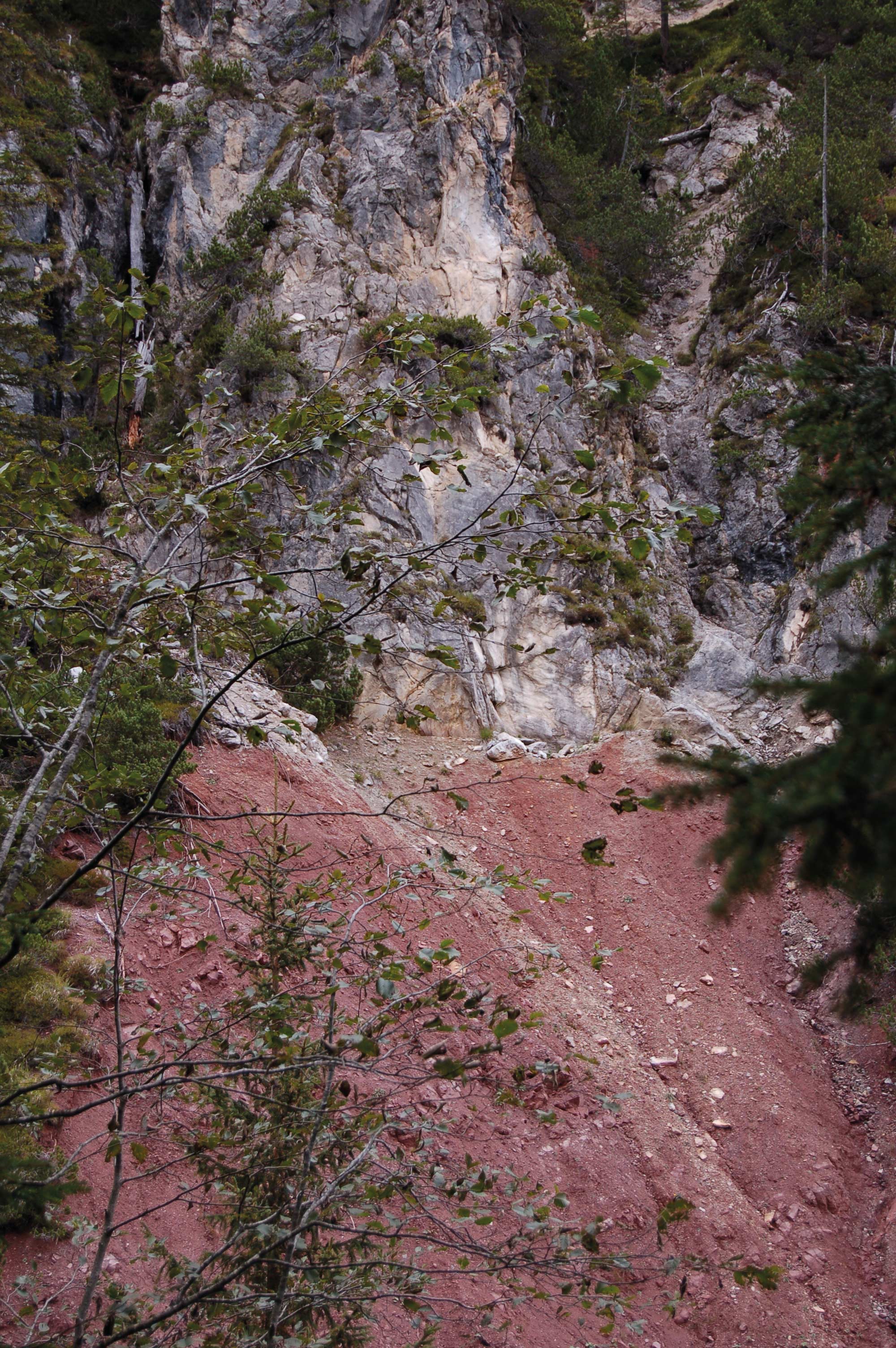As well as good soil, water is essential to the existence of a village. Laas has this in abundance. On the one hand, this is due to its climate, as the Gailtal valley is one of the regions of Carinthia with the highest levels of precipitation. However, the fact that there is spring water of the highest quality here is down to the local geology. The peaks of the Gailtal Alps around Laas are mainly composed of limestones and dolomites. The large number of fractures in these rocks means that rainwater drains downward inside the mountain until it reaches less permeable red sedimentary rocks, which were formed when there was a desert-like climate. This barrier layer forces the water to flow out from the mountain. A series of springs are lined up one after another along the whole length of the mountain overlooking the village of Laas. If this barrier layer were not present, the water would continue to flow down inside the mountain and the mountains around Laas would not be such an excellent source of spring water. The first centralised water supply for Laas was built in 1922. The water reservoir bears witness to this. Before this the residents drew their water from a central village or local well.
Cerca
Ultimi Post
- The temporary exhibition “The Wonders of the Underworld – Ampezzo, 20th June 2020
- The Geological Museum in Ampezzo opens next Saturday
- The temporary exhibition “Fossil fish from the Friulian Alps” opens again
- Coronavirus Emergency – extraordinary closing
- Presentation conference – book “INSIDE THE CARNIC ALPS” – Udine, 25th June 2019

